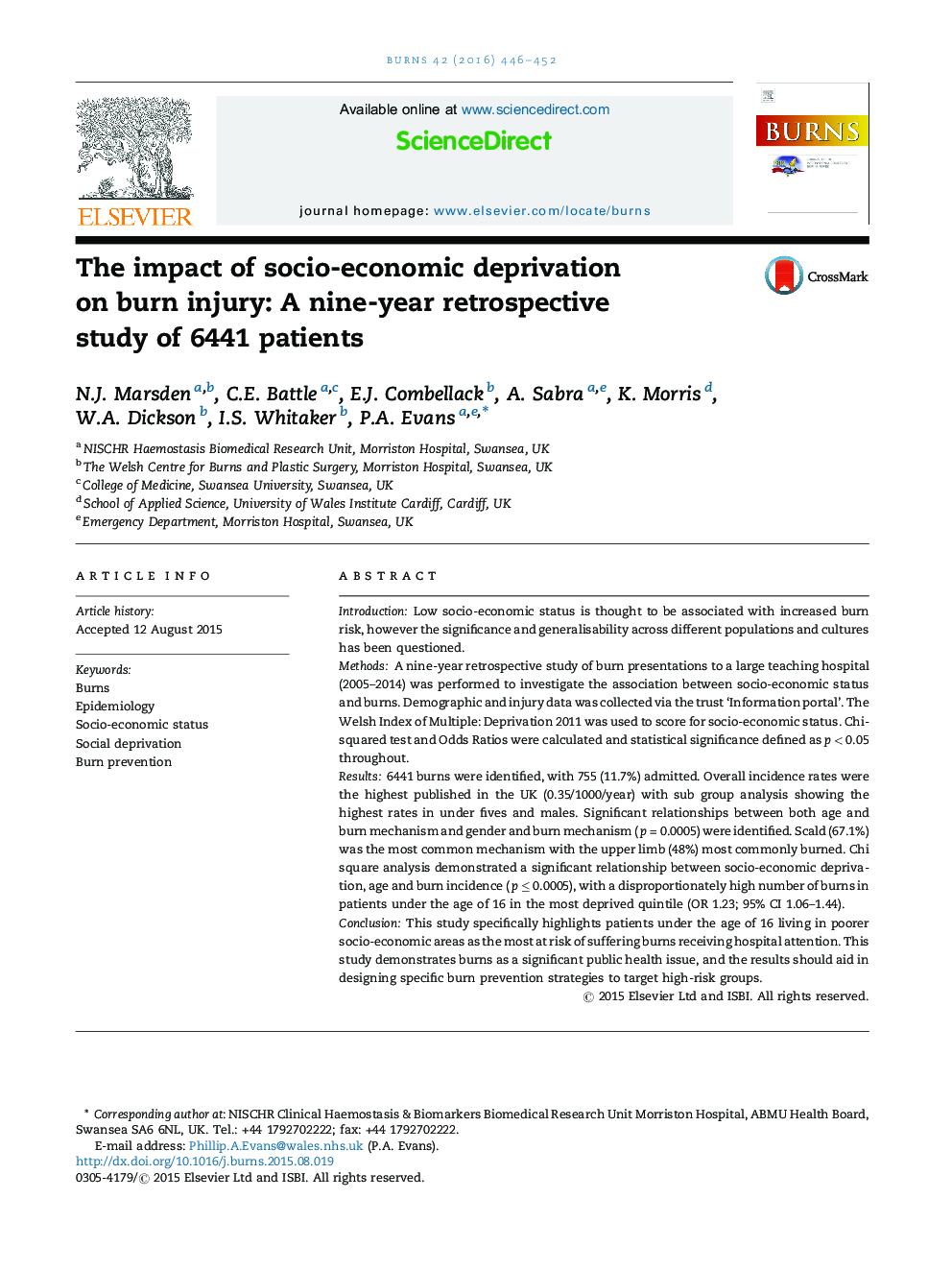| کد مقاله | کد نشریه | سال انتشار | مقاله انگلیسی | نسخه تمام متن |
|---|---|---|---|---|
| 3104054 | 1191639 | 2016 | 7 صفحه PDF | دانلود رایگان |
• The significance of low socio-economic status on burn risk has been questioned.
• This retrospective study reviews 6441 burns and investigates association with socio-economic status.
• Significant association between socio-economic deprivation, age and burn incidence (p = 0.0005).
• Patients under 16 in the most deprived areas at highest risk.
• Specific burn prevention strategies should be designed to target these high-risk groups.
IntroductionLow socio-economic status is thought to be associated with increased burn risk, however the significance and generalisability across different populations and cultures has been questioned.MethodsA nine-year retrospective study of burn presentations to a large teaching hospital (2005–2014) was performed to investigate the association between socio-economic status and burns. Demographic and injury data was collected via the trust ‘Information portal’. The Welsh Index of Multiple: Deprivation 2011 was used to score for socio-economic status. Chi-squared test and Odds Ratios were calculated and statistical significance defined as p < 0.05 throughout.Results6441 burns were identified, with 755 (11.7%) admitted. Overall incidence rates were the highest published in the UK (0.35/1000/year) with sub group analysis showing the highest rates in under fives and males. Significant relationships between both age and burn mechanism and gender and burn mechanism (p = 0.0005) were identified. Scald (67.1%) was the most common mechanism with the upper limb (48%) most commonly burned. Chi square analysis demonstrated a significant relationship between socio-economic deprivation, age and burn incidence (p ≤ 0.0005), with a disproportionately high number of burns in patients under the age of 16 in the most deprived quintile (OR 1.23; 95% CI 1.06–1.44).ConclusionThis study specifically highlights patients under the age of 16 living in poorer socio-economic areas as the most at risk of suffering burns receiving hospital attention. This study demonstrates burns as a significant public health issue, and the results should aid in designing specific burn prevention strategies to target high-risk groups.
Journal: Burns - Volume 42, Issue 2, March 2016, Pages 446–452
